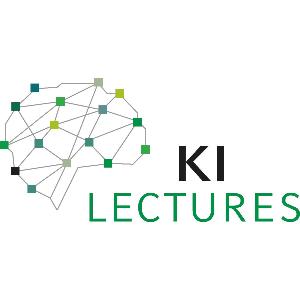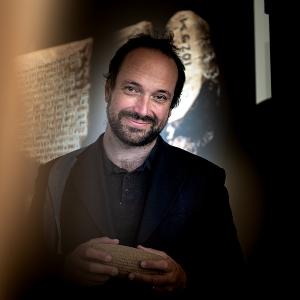Reconstructing masterpieces of ancient Near Eastern literature using artificial intelligence
22 Nov 2021
On 30 November, Enrique Jiménez will explain in his AI lecture how ancient texts can be reconstructed digitally.
22 Nov 2021
On 30 November, Enrique Jiménez will explain in his AI lecture how ancient texts can be reconstructed digitally.

Paper is a helpful invention – it has been used to transmit written language for some 2,000 years. But how do you read ancient Babylonian texts that were imprinted into clay tablets in Sumerian and Akkadian cuneiform in the three millennia BC? Many of the longer works only survive in fragments. Professor Enrique Jiménez from the Faculty for the Study of Culture is working on the reconstruction of such texts using artificial intelligence (AI).
AI-powered methods have proved especially useful, for instance to find parts of the Epic of Gilgamesh, the greatest literary work of ancient Mesopotamia. Through partially automated sequence alignment, Professor Jiménez and his team were able to assign ten new and previously unrecognized fragments to this significant text. Furthermore, the Assyriologist is currently working on a literary text hardly any of which has been identified yet, a kind of compendium of parodies. This text has remained unread since antiquity and is completely new to academia. “I’m therefore discovering new pieces and new passages of text every day I work on it,” says Jiménez.
It’s fascinating to see before my very eyes the text being pieced together out of unassuming shards of clay tablets and coming back to life after lying forgotten for millennia.Enrique Jiménez
Professor Enrique Jiménez: “Reconstructing masterpieces of ancient Near Eastern literature with the help of AI”
Tuesday, 30 November 2021, from 6:15 p.m. - 7:45 p.m.
More information about the "KI Lectures" can be found here.
Contact: ringvorlesung-lmu@lmu.de
Please note: The lecture will only be held in German. A VOD with English subtitles will be available shortly after the event on YouTube.

“I think we now have reasons to be more optimistic about the reconstruction of Babylonian literature.” | © LMU
Somewhat like an archaeologist, you dig up ancient treasures and piece together fragments of clay tablets into a meaningful whole. In what ways do computer-aided methods help you?
Enrique Jiménez: We study clay tablet fragments that were excavated decades ago but still lie unidentified in the storerooms of museums such as the British Museum and the Iraqi National Museum. Our digital platform makes the identification of these valuable but largely unexplored archive collections a great deal easier, as it allows us to collaborate with colleagues from around the world in reconstructing the texts. The platform has already become an indispensable tool for reconstructing the various genres of ancient Mesopotamian writing (such as poetry, divination, lexicography, and medicine).
In the past, Assyriologists were fairly pessimistic about the reconstruction of Babylonian literature. They doubted that the ancient texts could be recovered and made readable from beginning to end: Some said it would take centuries, others thought it might never be possible. I think we now have reasons to be more optimistic.
We have to develop an algorithm that recognizes connections in the chaos of individual pieces.Enrique Jiménez
You’re also using AI. How does an algorithm learn to read and piece together texts — and does it get better as it goes along?
Enrique Jiménez: Fortunately, the Mesopotamians left us many different copies of their texts. What is unfortunate is that almost all of the clay tablets are damaged and the texts have thus survived only in fragments. Taking into account these two factors — multiple copies and their fragmentary nature — we have to develop an algorithm that recognizes connections in the chaos of individual pieces.
A further complicating factor is the fact that cuneiform script is ambiguous: There are up to 25 ways to represent the same syllable. Consequently, each word can also be written in many different ways. So the first challenge is to present the computer with fragments and texts that we already know match, and effectively to ask the algorithm to match these known matches. Then we test the algorithm on fresh texts to see how well it works, and tweak it if necessary. The more texts we feed in, the better it gets.
Part of your research focuses on texts that have a poetic structure. Can AI understand poetry?
Enrique Jiménez: It’s really a question of what you mean by “understand” — if you mean identifying significant patterns, intertextual references or regularities, then of course the computer can do that, and in certain circumstances it can even do it faster and easier than humans can. We have found many new fragments by taking poetic structure into account, since certain words occur only in certain metrical positions, which means we know what to ask the computer for. In my opinion, however, “understanding” texts is closely related to “enjoying” them, and that is something only humans can do.
Professor Enrique Jiménez is Professor of Ancient Near Eastern Literatures at the Institute of Assyriology and Hittitology in the Faculty for the Study of Culture at LMU.